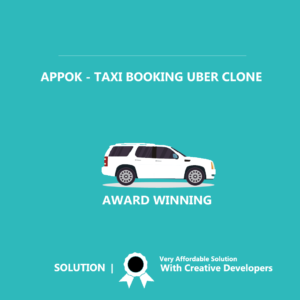In the waves of business in early 2010, when the entire industry would be transformed by the distribution of technology, Uber and Lyft were born.
Both companies are a product of the dreaded taxi system that existed in California prior to 2010. People could order cabs over the phone or online, but the operators were sending them depending on their position on the line, which meant someone could wait an hour for the cab app , uber cab booking online, to arrive from the other side of town. And if the boat saw a fare on the road, they would not be forced to complete the prescribed ride.
In the case of Uber in particular, the app is designed to make taxi ordering more reliable. Lyft cab booking online resumed its service after competing with Uber, which was originally considered a long-distance car service.
In China, Cheng Wei coined the same idea, after spending several years working at the Alibaba payment section. Seeing an opportunity to create a safer payment system for taxi app drivers, he introduced Didi Dache. Cheng Wen and Joe Lee will launch a similar service in Hangzhou, called Kaidiidi Dache.
Uber, run by then-CEO Travis Kalanick, grew rapidly to Europe and Asia. Sponsored by a coalition of engagement capitalists who aspire to see ride fame become the next major technology sector, Uber taxi app is pleased to spend billions every year competing in almost every market.
This peaked in 2015, when Uber announced that it was spending $ 1 billion a year to compete in China. As the Uber China threat grew, Didi and Kuaidi, backed by Tencent and Alibaba respectively, met. At the time, Didi and Kuidiidi were fiercely competitive, both reaching out to over 150 million users.
The combined force was too big for Uber to fight, and the company bowed its head in the country in 2016, selling its Chinese class in the category for $ 35 billion and 17 percent for Didi Kuaidi, which has already been reduced to less than 15 percent.
Even at the loss of China, Uber remained the largest passenger platform in the world. Didi would take on a few smaller operators, and today he faces more than 95 percent of all mobile taxis in China.
As the competition in China stabilized, Uber began to expand its network in India, which Kalanick considered another major battlefield. Ola Cabs, which is likely to follow Didi’s example, acquired its rival TaxiForSure for $ 200 million in 2015, forming a joint venture that could challenge Uber.
Instead of succumbing to pressure, Uber continued to grow in India. While Ola is still ahead of most sources, Uber believes it has reached a 50 percent market share in the country by 2019, which could pay dividends in the next few years as millions of drivers and passengers move to mobile systems.
In Europe, Uber has led a respectable lead in many countries, although it has had to contend with regulators in France, Germany, Hungary and the UK. New operators, such as Free Now and Bolt, are challenging Uber’s size in the region, while Cabify and Didi are highly competitive in the South American market.
We expect Europe to be one of Uber’s most important battlefields in the next five years, with Bolt, Free Now, Gett and Ola competing in major cities. Uber is reportedly looking to acquire Free Now, owned by BMW and Daimler, for $ 1 billion in the north. It recently acquired Careem, which runs the Middle East passenger system, for $ 3.1 billion.
Another competitive region to take care of is Southeast Asia, where Uber, Grab and Go-Jek operate. Grab and Go-Jek are both considered “super apps”, as they both offer a wide range of services through their passenger network, such as how Uber uses its network to deliver food and rent bicycles. SoftBank, which owns shares in both Grab and Go-Jek, wants a merger of both operators, to strengthen them in the epidemic.
In less than a decade, horseback riding has built a huge industry, and operators have used it as a framework for other transportation opportunities, such as food delivery, shipping and driving.
The only serious hiccup, which affected both Uber and Didi, was the safety of the drivers. For Uber, this comes in the wake of allegations of sexual harassment against Uber executives in 2017 and 2018, which were widely reported in Uber-related issues that misrepresented allegations of harassment by female passengers. Similar allegations were published in China in 2018, after two women were killed by their drivers Didi’s Hitch, which led to the suspension of the service.
In both cases, Uber and Didi reorganized their internal teams and added security features and driver reporting systems. Kalanick, who is seen as a cultural leader who allows allegations of sexual harassment to be uncontrolled, took over as CEO and left the board soon. Didi hired thousands of Communist Party members as drivers and representatives of the security team and reportedly spent $ 1.61 billion to increase security.
The coronavirus epidemic has been a hazard to climbing operators of praise, with some countries having a 90 percent reduction in usage. China, which reportedly reported less than 20 incidents a day, returned to normal in June, but consumption in Europe and North America remained at a low level.
While Uber and other operators have added additional health measures, in countries with measures to shut down or prevent nightlife, the need for a taxi has diminished. Thanks to Uber, Grab and Go-Jek, other projects such as food delivery have seen significant growth during the epidemic.
US Taxi Market
Uber pioneered a passenger model, which has been in operation for the first few years in major US cities. Lyft has managed to paint the second most prestigious place in the country. Both aim to reduce costs with the introduction of self-driving cars, sometimes in the future.
During the epidemic, Uber and Lyft both experienced a 90 percent drop in boarding. Although some circuits are open, some are somewhat locked and few people travel by taxi than before.
Uber and Lyft are trapped in a two-horse race for a better ten-year period, during which Uber has always played a leading role in its rival. Uber is growing rapidly and staying very far from Lyft in terms of wide acquisition, although Lyft gained a foothold in 2018, amidst the #CancelUber trend.
UK Taxi Market
Aside from the black cabinets in London, the UK had a prominent ride market before the launch of Uber. However, Uber has taken over the major cities of the UK, with London becoming one of the most competitive markets in the world, with Bolt, Ola, Free Now and Uber all competing for market share.
As in the United States, the UK has seen a sharp decline in taxi use since the national closure in March. With the second closure starting in November, we expect the revenue to remain much lower than in 2019. Uber controls the passenger market, although many local operators have introduced more competitive apps. Uber acquired Autocab earlier this year, giving it a wide range of options for small towns in the UK.
Compared to other UK countries, London is a highly competitive market, with Bolt, Free Now and Ola all vying to replace Uber as Europe’s largest market leader.
Uber has recently received all the speculation to continue working in London, following the 2019 Transport for London decision to suspend his license. Ola was given the same cancellation of the license granted to him in October, although it will appeal the decision and continue working for now.
Europe Taxi App Market
Local laws and taxi unions have barred Uber from completely regulating European stocks. This has allowed other European alternatives to grow, such as Bolt of Estonia, Free Now of Germany and Cabify of Spain.
Compared to the US, Europe has seen its ecosystem boarding system grow rapidly over the past few years, as applications such as Free Now and Bolt have begun appearing online in all major European cities. Like the US, European revenue has been reduced by the coronavirus epidemic, which has hit some regions hard.
Due to the variety of applications offered, in major European cities people can choose between five taxi providers (Uber, Gett, Bolt, Free Now, Ola), rather than more active users, although there may be a crossover.
The global number of horse riding came in 2020, as demand for taxis declined worldwide. Uber, Didi, Grab and Go-Jek have all tried to make up for the loss of food delivery and other needed services at the moment.
We expect that in 2021 rides congratulations to begin its upward trend, perhaps as quickly as before as we exit the lock and people change their route. Over the next five years, it is expected that more people in major cities will be able to ride cars with shared sharing services, while advanced driving systems will continue to penetrate deeper into cities around the world.






